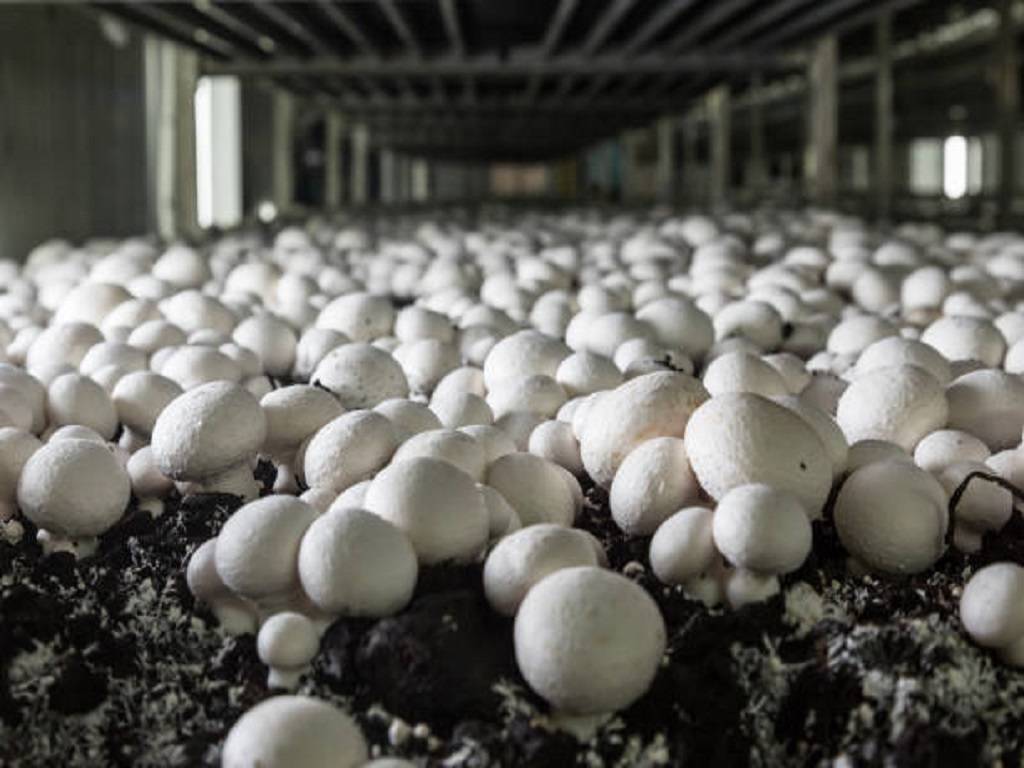
Mushroom cultivation is steadily expanding as an alternative source of income in India. Mushrooms are fungi, and like many plants, they may be cultivated in "polyhouses." Mushroom cultivation in a polyhouse is among the most successful agribusinesses that can be established with little space and money. Learn more about Polyhouse Mushroom Farming.
Mushroom Cultivation in Polyhouse
Polyhouse farming is a new method that decreases dependency on rainfall while making the greatest use of available land and water resources. If you want to grow mushrooms in a polyhouse, you may need to modify a section of the greenhouse to block out light. Take extra precautions to keep the temperature steady, ideally between 55 and 60 degrees Fahrenheit.
Common Mushroom Varieties
The following are the most common varieties of mushrooms found in India.
-
Straw mushroom
-
Oyster Mushroom
-
Button Mushroom
Paddy straw mushrooms may grow in temperatures ranging from 35 to 40 degrees Celsius. Button mushrooms are produced throughout the winter. Oyster mushrooms grow on the northern plains.
Polyhouse Specifications for Mushroom Cultivation
Crop-specific polyhouses were created based on the functional status of the mushroom crop. It had an insulated roof and ventilated walls. The major elements of a polyhouse for mushroom cultivation are described in detail below.
Roof- A multi-layered roof made of the iron net (half-inch mesh), polythene sheet (0.025 mm thick), jute sheet (3 mm thick), EPF thermocol sheet (8 mm thick), and UV stabilized polythene sheet (0.4 mm thick).
Floor Material- Single-layer vertical brick will be used as the floor material. Polyhouse farming should have a floor that is 1 m below ground level.
Door- To keep flies and pests out of the polyhouse construction, a double door frame is installed.
Growth Media for Mushroom Cultivation
While many edible plants and vegetables may be grown in soil, mushrooms require a special growth media. Mushrooms thrive in organic matter that is high in both natural sugars and nitrogen. Because it is moist and nutrient-rich, horse manure combined with straw provides an ideal mushroom-growing substrate. Corn fodder, straw, peat moss, and water can all be used to produce mushroom compost. Making your growth media, on the other hand, may not be viable unless you expect to produce a huge number of mushrooms.
Process of polyhouse Mushroom Cultivation
Composting: It gives mushrooms the nutrition they need to grow. Mushroom compost is often made from two types of ingredients, the most common and least expensive of which is wheat straw bedded horse manure. The second type of compost is synthetic compost, which is often formed of hay and crushed corncobs.
Spawning: The indoor fresh compost is pasteurized at 57 to 60 degrees Celsius in a tunnel. This will eliminate all bacteria. The compost is left in the tunnel for six days before being combined with spawn to grow mushrooms.
Casing: The mature compost is extending onto the mushroom beds, which are long stainless steel boxes. The beds are housed in customized darkroom cells, which are regulated at a safe temperature of around 23 degrees Celsius. To keep the compost moist, a layer of peat casing material is placed on top of it. Because additional moisture is necessary, 20 to 25 liters of water is sprinkled on each m2 in each cell over six days.
Pinning: After rhizomorphs have developed in the casing, mushroom initials develop. The initials are small, but they may be seen as rhizomorph outgrowths. The structure is a pin once the start quadruples in size. During the button period, pins continue to develop and get bigger, and a button eventually enlarges into a mushroom.
After 18 to 21 days after casing, the mushrooms are ready to harvest. By introducing fresh air into the growing chamber, the carbon dioxide concentration of the room air is reduced to 0.08 percent or lower, based on the cultivar. The carbon dioxide concentration of outside air is 0.04 percent.
Tips for optimal results
The growing area must be coated with a white web of mycelium several weeks after the mushroom spawn is planted. Raise the temperature in the polyhouse to 65 to 70 degrees Fahrenheit during these weeks to ensure development. It's critical to keep the spawn moist at this stage. Moisten the tray with water three times a day for optimal results.
















